Here at DC Histories, we try to make sense of the continuity that perplexes, befuddles, and intimidates. We discuss what worked and what didn’t. This week, we’re talking about the three year period when DC had the right to publish comics taking place in the world of Dungeons & Dragons.
Role-playing games were at their height in the last 1980s and early 1990s. Games such as GURPS, Champions, and DC Heroes could all be found on hobby shop shelves. Next to them, and above them in many players’ minds, was the granddaddy of RPGs, Dungeons & Dragons. Before video games truly had the capacity to transport players into detailed worlds, they could do so with just paper, dice, and a few rule books. TSR, the publisher of Dungeons & Dragons, was king.
TSR, an acronym that originally stood for Tactical Studies Rules but was meaningless by the company’s apex, had begun to expand its Dungeons & Dragons brand beyond a simple game in early 1980s. A television show, several computer games, and a small army of novels had been made available to consumers by 1988. In that year, TSR decided to branch out into another storytelling medium. This time, they licensed the Dungeons & Dragons name to DC Comics and allowed the company to begin publishing comics based on TSR’s various campaign settings. Advanced Dungeons & Dragons #1 and Dragonlance #1 hit store shelves the same month.
Set in the city of Waterdeep, Advanced Dungeons & Dragons took place in the campaign setting known as Forgotten Realms. It took its terrible name from the Advanced Dungeons & Dragons line of products, which were aimed at more adult players who wanted tighter rules in their RPGs. The regular Dungeons & Dragons line was for more casual players.
Like any good adventuring group, the lead characters in Advanced Dungeons & Dragons were a mix of races and classes. A half-elf mage, a human ex-gladiator, a dwarven thief, a centaur ranger, and a human paladin were all present. The group created a lively amount of internal conflict and it quickly became a fun series to follow. Dan Mishkin, a DC veteran and co-creator of Blue Devil, became the main writer on the series after Michael Fleisher wrote the first two stories. It was a fun fantasy series, especially those issues written by Mishkin, and something worth seeking out these days.
While Advanced Dungeons & Dragons featured new characters in a familiar campaign world, Dragonlance dealt with characters with which readers were intimately familiar. Set in the world of Krynn, a different world than the one which housed Waterdeep, this was a setting which seemed to be constantly at war. Concerned mostly with characters who had appeared in 1984’s stage-setting novel Dragons of Autumn Twilight, the Dragonlance comic book also introduced Riva Silvercrown, a young adventurer with whom readers could identify. Among her adventures, she stumbled across legendary pre-existing characters such as Tanis Half-Elven, Sturm Brightblade, and the brooding mage Raistlin Majere.
These two series are still very enjoyable though Dragonlance does benefit from knowing a thing or two about the world before you open the first issue. Flush with success from their first two ventures, a third TSR series began in 1989 titled Gammarauders. Dealing with a world in which technology had allowed humans to bond with giant, multicolored animals, the series’ setting was a strange mix of a techno-future and retro-pop culture references.
The series lasted only 10 issues and was cancelled halfway through its third story arc. The final letters column was just a plot outline for how the arc would have ended if two additional issues had been published.
A series with a bit more lasting power debuted the same year that Gammarauders came and went. Titled Forgotten Realms, this new series was officially a spin-off of Advanced Dungeons & Dragons. The two ongoing stories took place in the same universe and Realms starred a character who had first debuted in the pages of the older title. While Advanced Dungeons & Dragons concerned itself with the area in and around the city of Waterdeep, Forgotten Realms went far and wide across the entire world. It helped that the series took place on a magical ship which could teleport across the Realms. Helmed by a magician named Dwalimar Omen and crewed by a halfing thief, an elven priest, a paladin battling an alcohol problem, an Asian human warrior, and a female dwarf whose soul was stuck in a stone golem, the Realms Master was quite the ship.
Though the story was a good one, Forgotten Realms may best be remembered for being the place where Rags Morales got his start as a comic book artist.
Though his art style would develop further the longer he stayed on the book, eventually becoming much closer to the art seen in later titles like Identity Crisis and First Wave, Rags was a solid storyteller from the beginning. This is where I first discovered his work and I was happy to see everyone else realizing how great he was when he got his breakout roles in the 2000s.
Jeff Grubb, the series’ sole writer, was also a major contributor at TSR. There, he had helped develop both the Dragonlance and Forgotten Realms campaign worlds along with taking the lead on the Spelljammer setting. It was great to see that he could create a narrative story and not just build worlds for others to play in.
In 1990, it was decided that all of the TSR line of books should have a crossover. In annual titled TSR Worlds, that’s exactly what happened. While it was easy for Advanced Dungeons & Dragons and Forgotten Realms to be involved together, as they existed on the same world, Dragonlance was a bit tougher. However, thanks to the Spelljammer campaign world, it was shown that characters could travel between worlds by flying around outer space in magical space ships. Realizing this was the easiest way for everyone to meet, this concept were introduced into the comics.
The idea of characters traveling in outer space was seen as rather controversial in the traditional high fantasy worlds developed by TSR. That didn’t stop DC from releasing a Spelljammer spin-off series launched from that TSR Worlds special. Featuring a living magical ship and a crew of random travelers, the series got off to an interesting start.
Sadly, the series’ long term plotting was half-baked at best when it began and a rotating series of writers and editors didn’t help matters any. Without a cohesive narrative and a complete explanation about how Spelljamming between worlds actually worked, the series quickly became a mess. Things were such a mess, in fact, that the final issue of the series didn’t even know it was the final issue. It promised readers that it would be back in 30 days which turned out to be a promise that it just couldn’t keep. The series ended mid-storyline.
As things were coming to a screeching halt with Spelljammer, Dragonlance was making its own change. Characters who had first appeared in the various novels set in that world stopped being used in the comics. Riva Silvercrown became the series main character. Readers followed her as she explored new areas of Krynn never before seen in other mediums. To me, the highlight of the series always was Riva running into a blue dragon being ridden by a one-handed minotaur. Come on, fantasy novelists. Let’s see more of that, shall we?
In 1991, it became clear to everyone involved that the TSR license was ending at DC. Each of the remaining series began to wrap up their various storylines. The characters in Advanced Dungeons & Dragons said their goodbyes to each other outside of their favorite Waterdeep tavern.
Meanwhile, Forgotten Realms took another tactic. The second-to-last issue in that series was a hilarious romp “behind the scenes” of the comic series, full of in-jokes to all of the previous TSR/DC Comics titles. It was also a tour de force for Rags Morales, who had left as the series’ regular penciler several issues earlier. I rank it highly among my favorite single issues ever.
With that, all of the TSR titles published by DC Comics wrapped up. Though TSR went bankrupt in 1997, Wizards of the Coast bought them up and they are now in charge of the Dungeons & Dragons properties. In the ensuing years, the license bounced around from comics publisher to comics publisher, most of them on the small side. Recently, IDW got a hold of the property and began making new series based on these, and other, campaign worlds. Thankfully, they’ve also started to reprint the better stories from the DC Comics era. Their Dungeons & Dragons Classics line reprints the Advanced Dungeons & Dragons series while Dungeons & Dragons: Forgotten Realms Classics reprints the Forgotten Realms stuff. Both are certainly worth your time and they get even better as they go. Seek them out.
Jeff Reid played a wizard in the Dark Sun world named Shard. He was awesome so shut up about his name already. If you don’t mind being told to shut up, follow Jeff on Twitter.
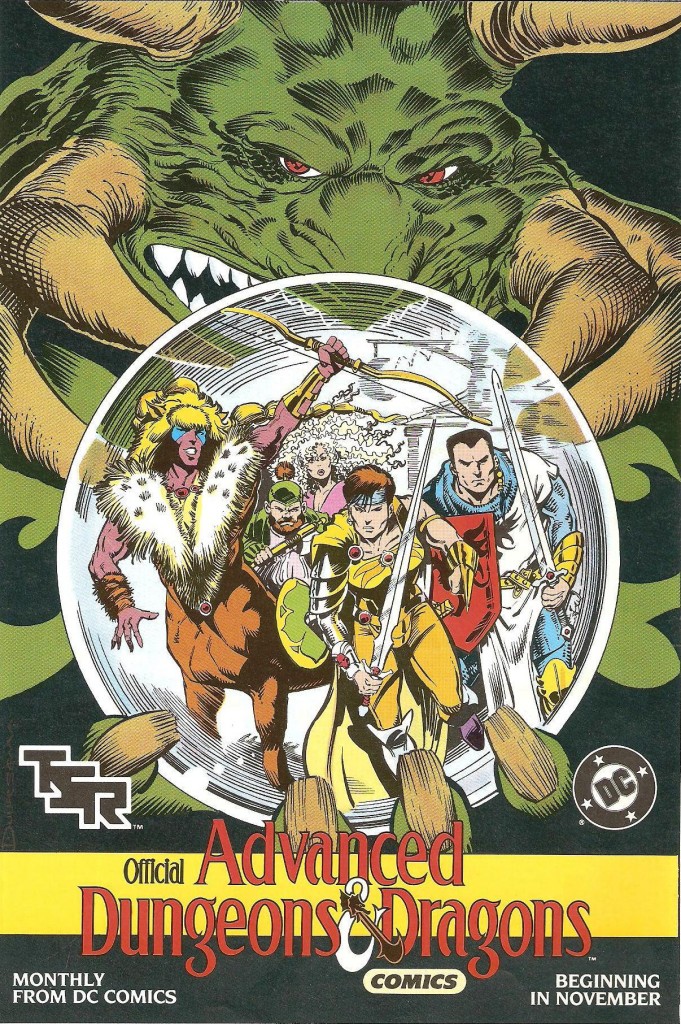


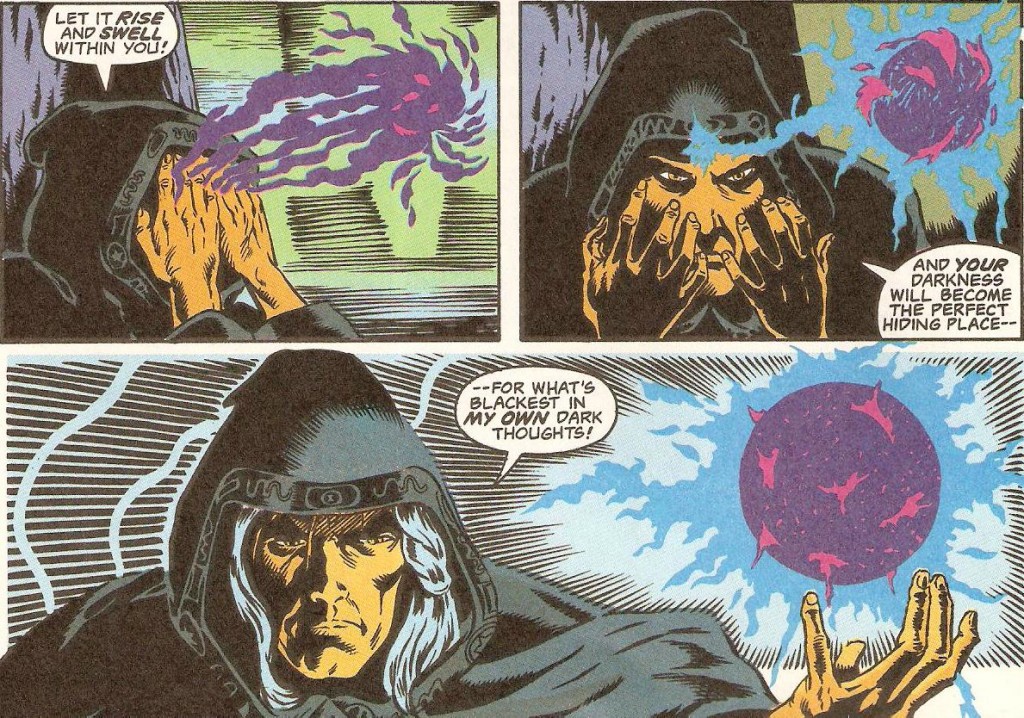



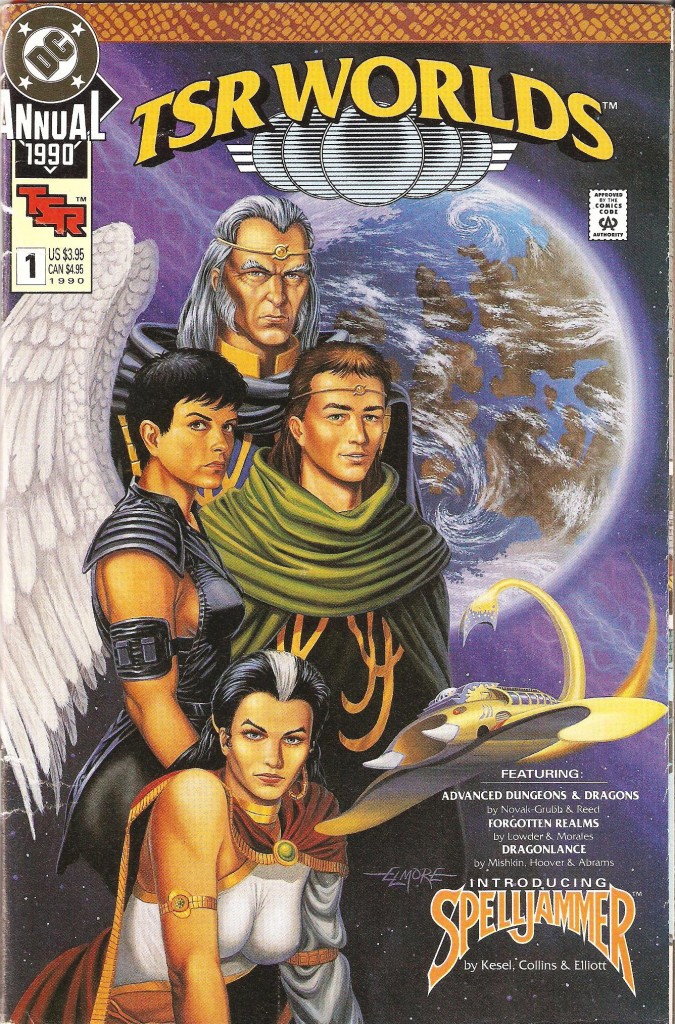

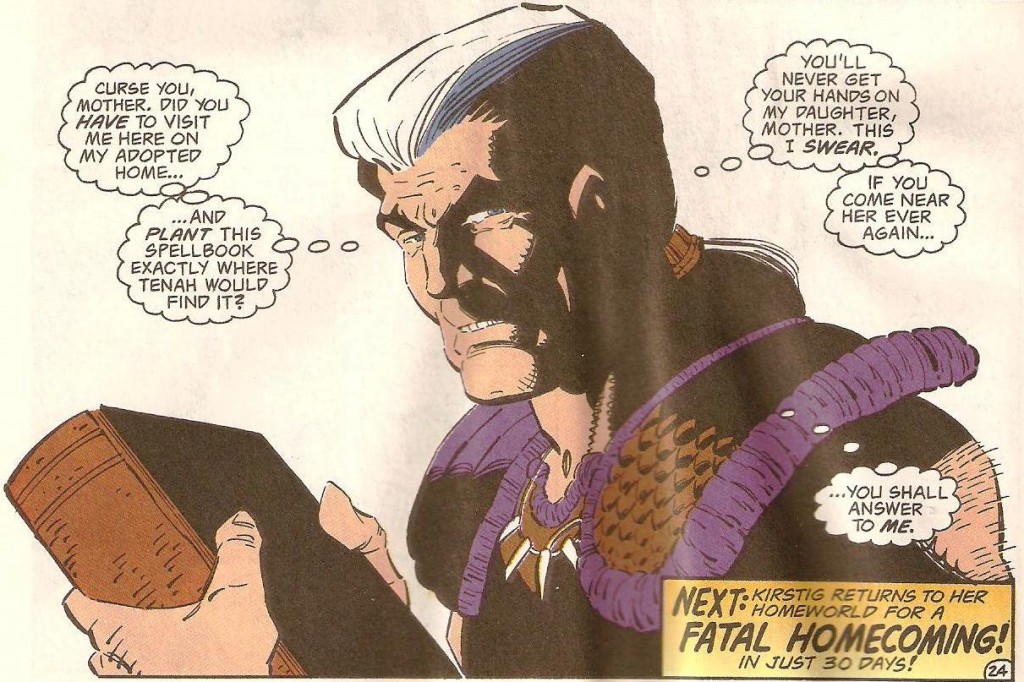
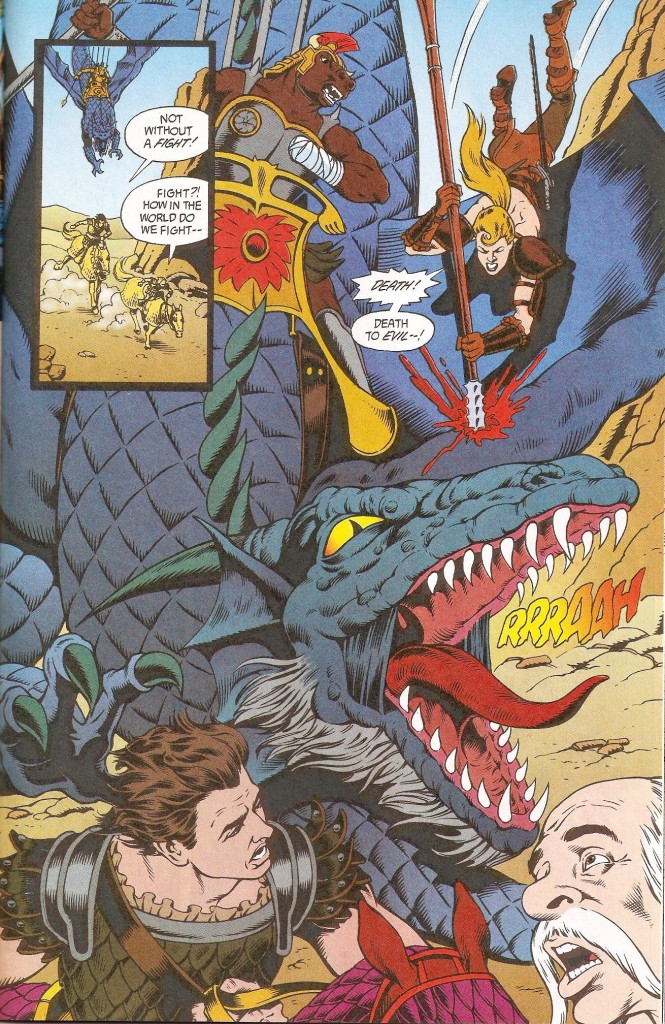
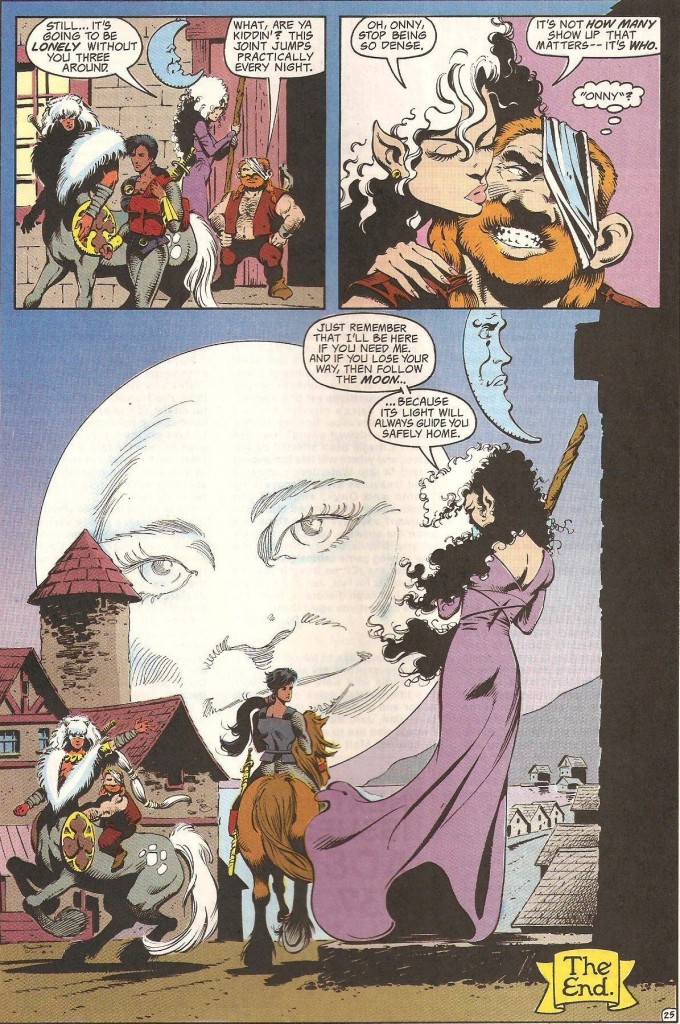



I remember a D&D Saturday morning cartoon when I was a youngster. I think some kids from our world were somehow transported into the D&D world and they got into adventures attempting to return home.
There was something about the art-style for that show that really struck a chord with me when I was a very wee lad. I don’t even remember it being that good, I just liked the way it looked for whatever reason. I think there might have been a board game based on it that I half-remember.
The intro explains it all: http://www.youtube.com/watch?v=3JjhQ1Oi_3k
Yup. Brings me back. Looks Hanna-Barbarra or Don Bluth-ish…
Jeff, you’ve put a spell on me today.
Dragonlance was my gateway into comic book collecting, found it on the shelf of a grocery store then it was weekly bus trips downtown to the comic shop, ( Now and Then Books, where Dave Sim worked in the seventies ). I hated the title AD&D and would not read it, Forgotten Realms however was fantastic, I think that first issue was read a hundred times in the summer of ’89…and that Spelljammer book was terrible.